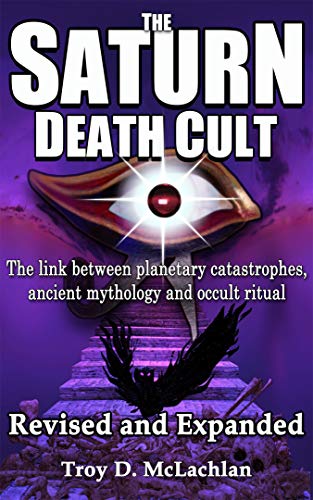“The Rise of the Nicolaitans.
The parasitic nature of Mystery Babylon’s debt-based financial system was eating Rome out from the inside. No amount of murderous ritual seemed to help. And yet, because Mystery Babylon’s debt-based monetary system is nothing more than a parasite, it couldn’t help itself in slowly killing its host.
The only way for a parasite to survive is to find a new host. But where could Mystery Babylon go now?
Luckily for Mystery Babylon and its dependant Illuminated Ones, it was during this economic turmoil that the stage was being set for the rise of a new breed of priest-kings. They were to come out of the ranks of a long-forgotten and ancient priesthood still struggling to keep the flame of Golden Age values alive.
At the height of the Roman monetary crisis, a small group of practically-minded priests called Nicolaitans claimed a controlling stake in a small yet highly committed band of proselytes. These proselytes were the heirs to a tradition that extolled the virtues of a Silver Age priesthood called the Order of Melchizedek.
The Nicolaitan approach to the teachings of this Melchizedekian order was as clear as it was concise: Promoting Melchizedekian values would be handled as a marketing exercise and to achieve this you needed committed professionals.
The Nicolaitans considered themselves consummate spiritual head and main teacher of the Melchizedek order was, at the time, the very same Judean that had assaulted the merchant bankers in the old temple at Jerusalem some two hundred years before. Though long since vanished from the scene, his collected thoughts and insights were central to the priesthood’s sense of validity.
The Judean was noted to have propounded certain teachings that echoed the principles of justice and righteousness of the Golden Age. He drew his moral authority from values closely related to that time. The difficulty was that he didn’t have a very marketable image, something the Nicolaitans recognised would be a problem if they were to successfully sell the idea that he represented their right to speak on behalf of the supreme Creator.
In fact, there was a total dearth of exploitable information about the man.
There were no physical descriptions, surviving contemporary portraits or even preliminary sketches from which to build a pesonality cult around this Judean.
No one knew what the guy had really looked like, which was deemed important in a culture heavily influenced by physical beauty and presence. The plethora of semi-naked and impossibly perfectly proportioned statues that abounded throughout the empire were the fashion magazine covers of the day.
Beauty was in and you had better be good looking, or at least well dressed, if you were going to catch the public’s eye. Nothing in the Judean’s legacy seemed to point to anything remotely marketable.
The Nicolaitans pondered this problem and eventually turned to brainstorming on the Judean’s name as a possible solution. His name had been Yashua. Today, in modern English, his name would be Joshua.
In his native tongue, the Judean’s name comtained a ‘Ya’ which could mean ‘lord’ or ‘god’ depending on the context. The Nicolaitans liked this, but had trouble finding a linguistic link to the supreme Roman name of Jupiter.
Obviously, in a Roman world where Jupiter was the recognised lord of heaven and all below, it would have been better if this Yashua had been named Jupiter.
After all, he did claim to be the Son of God and wasn’t Jupiter none other than the first supreme god Saturn? But this ‘Ya’ thing didn’t fit the bill and was a bit too obscure for the majority of the Roman empire who spoke mainly Latin or Greek.
Then someone had the bright idea of mixing both the ‘Ya’ in the Judean’s name with the Jupiter title which gave you – Yapiter! This was, quiet rightly, dismissed as ridiculous, but they had a sense they might be on to something.
And then it hit them – Zeus! Zeus was the Greek equivalent of Jupiter and a simple juxtaposition of the ‘Ya’ with Zeus rendered a name that effectively denoted its bearer as ‘Lord Zeus’! What you had was YaZeus, which became Yeseus,… and eventually morphed into Jesus.
Again, certain Illuminated Ones looked on from the shadows and smiled at this brazen act of linguistic alchemy. Jesus, or Lord Zeus, was something they could work with. They particularly liked the image of the bloodied Jesus suffering in agony while hanging from an old fashioned Roman instrument of execution. There was definite blood-ritual potential there.
In the meantime, life in the Roman empire was becoming dire. This formerly iron-willed beast was looking decidedly rusty. A gang of northern barbarians agreed and soon they were ransacking the empire’s frontiers at will.
But, as seems to be the case in history, cometh the hour, cometh the man.
Constantine the Great would mark the last time Imperial Rome would enjoy the rule of a true warrior-king. It would also mark the beginnings of the Nicolaitan’s rise from obscurity to re-establishing a Priest-king as ruler over the known world.”
Utdrag fra: Troy D. McLachlan. «The Saturn Death Cult». Side 111 – 113.
Boken kan leses i sin helhet her https://img.fireden.net/tg/image/1500/35/1500356306614.pdf


